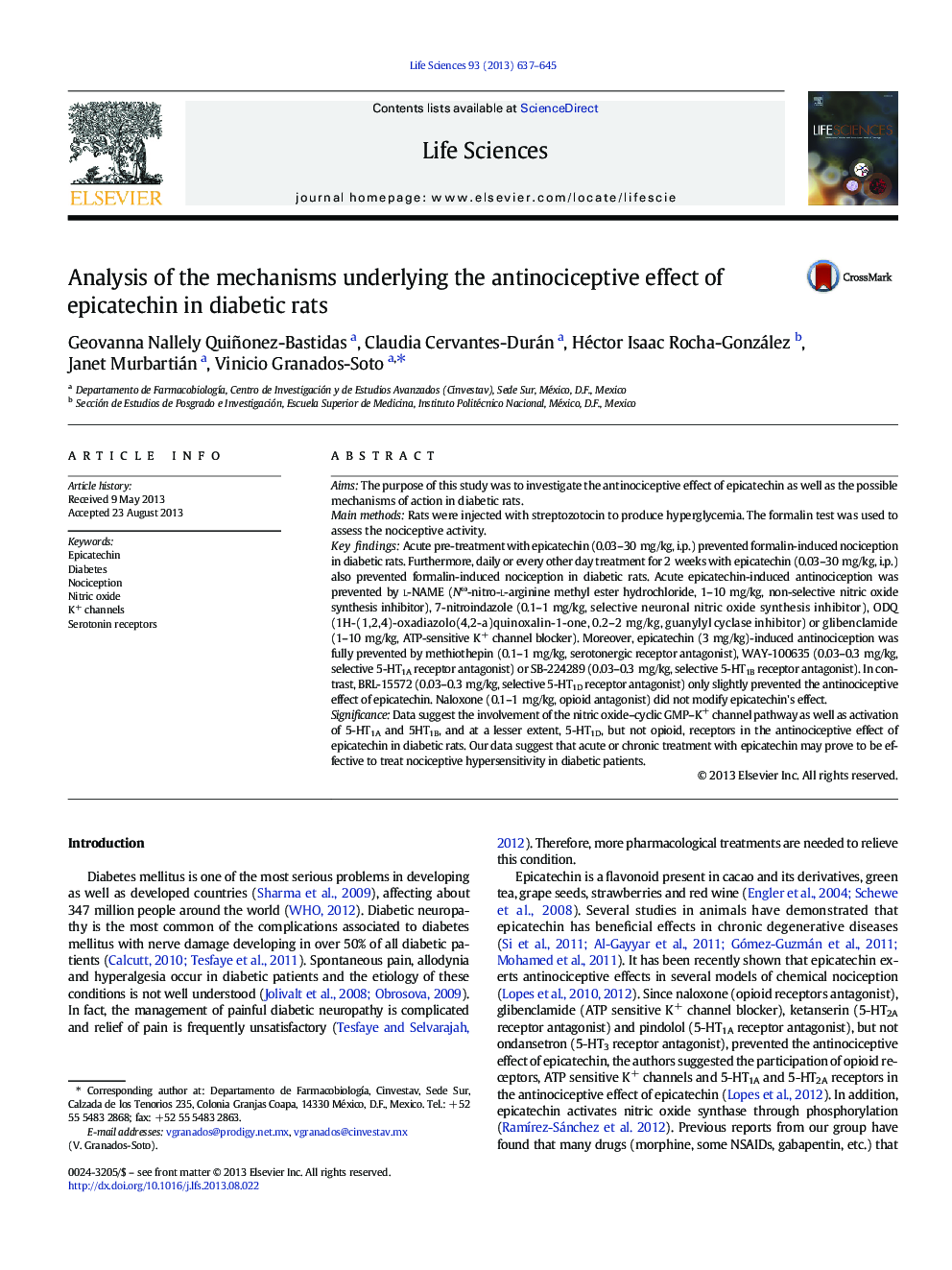| کد مقاله | کد نشریه | سال انتشار | مقاله انگلیسی | نسخه تمام متن |
|---|---|---|---|---|
| 2551462 | 1124730 | 2013 | 9 صفحه PDF | دانلود رایگان |

AimsThe purpose of this study was to investigate the antinociceptive effect of epicatechin as well as the possible mechanisms of action in diabetic rats.Main methodsRats were injected with streptozotocin to produce hyperglycemia. The formalin test was used to assess the nociceptive activity.Key findingsAcute pre-treatment with epicatechin (0.03–30 mg/kg, i.p.) prevented formalin-induced nociception in diabetic rats. Furthermore, daily or every other day treatment for 2 weeks with epicatechin (0.03–30 mg/kg, i.p.) also prevented formalin-induced nociception in diabetic rats. Acute epicatechin-induced antinociception was prevented by l-NAME (Nω-nitro-l-arginine methyl ester hydrochloride, 1–10 mg/kg, non-selective nitric oxide synthesis inhibitor), 7-nitroindazole (0.1–1 mg/kg, selective neuronal nitric oxide synthesis inhibitor), ODQ (1H-(1,2,4)-oxadiazolo(4,2-a)quinoxalin-1-one, 0.2–2 mg/kg, guanylyl cyclase inhibitor) or glibenclamide (1–10 mg/kg, ATP-sensitive K+ channel blocker). Moreover, epicatechin (3 mg/kg)-induced antinociception was fully prevented by methiothepin (0.1–1 mg/kg, serotonergic receptor antagonist), WAY-100635 (0.03–0.3 mg/kg, selective 5-HT1A receptor antagonist) or SB-224289 (0.03–0.3 mg/kg, selective 5-HT1B receptor antagonist). In contrast, BRL-15572 (0.03–0.3 mg/kg, selective 5-HT1D receptor antagonist) only slightly prevented the antinociceptive effect of epicatechin. Naloxone (0.1–1 mg/kg, opioid antagonist) did not modify epicatechin's effect.SignificanceData suggest the involvement of the nitric oxide–cyclic GMP–K+ channel pathway as well as activation of 5-HT1A and 5HT1B, and at a lesser extent, 5-HT1D, but not opioid, receptors in the antinociceptive effect of epicatechin in diabetic rats. Our data suggest that acute or chronic treatment with epicatechin may prove to be effective to treat nociceptive hypersensitivity in diabetic patients.
Journal: Life Sciences - Volume 93, Issue 17, 17 October 2013, Pages 637–645